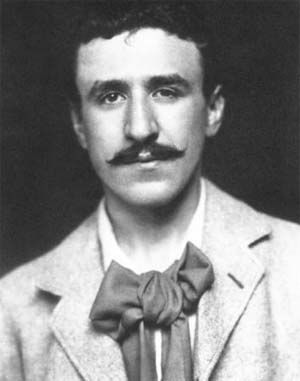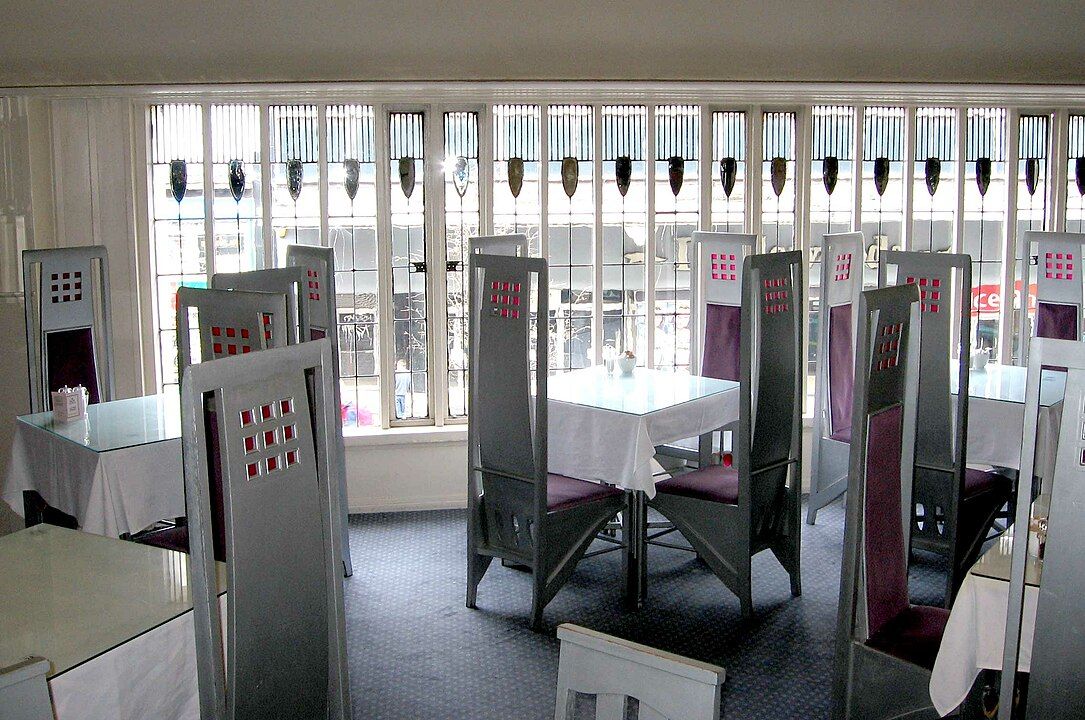Charles Rennie Mackintosh is one of the forefront figures in the history of Scottish architecture and design. Not only his work proved fundamental to the development of the renowned Glasgow Style, but it also influenced European artistic movements as important as Symbolism and Modernism, leading British Art Nouveau alongside his wife, Margaret MacDonald.

Biografía temprana
Son of Margaret MacIntosh (maiden name Rennie) and William MacIntosh, a local police superintendent, Charles Rennie Mackintosh was born in Glasgow on June 7, 1868, within an extensive family. His early education took place in public schools and institutions in the city. At some point during his youth, without knowing exactly why, the spelling of his surname changed from MacIntosh to Mackintosh.
In 1884, Charles started working as an architect’s apprentice, and thus began his higher education at the Glasgow School of Art, where he always stood out among his peers. Only six years later, he was already an associate of one the best architecture bureaus in the city, the same one where he had carried out his design and delineation internship.
His inspiration would always be rooted in Glasgow itself, as the city where he spent most of his life, and where he would become infused with Modernist and industrial ideas, as well as a new Asian style called Japonisme, since Japan held a close relation with the Clyde dockyards at the time. Mackintosh loved the simplicity, pragmatism and use of natural materials that such style boasted, being so similar to Modernism regarding its purity of lines and rejection of the pompous and the intricate.

Glasgow Style
As a combination of Japonisme, Modernism, Art Nouveau, and the influence that his vibrant hometown always exerted on him, Charles Rennie Mackintosh gave birth to a new, original form of architecture and design: the Glasgow Style. Marked by its strong, right angles and a liking for floral motifs, Mackintosh would stand by it throughout his entire career.
But no genius works alone, and Charles was fortunate enough to closely surround himself with other brilliant personalities from contemporary arts and architecture. Such is the case of Herbert MacNair, a peer from the Glasgow School of Art and his subsequent internships, and an inseparable friend of Mackintosh’s. Both were fatefully introduced by the art school dean to the sisters Margaret and Frances Macdonald, whose artistic styles were strikingly similar to theirs, therefore, not only they got married, but they also collaborated throughout their whole lives by means of a well-known group called The Four.

Main works by Mackintosh
Charles Rennie Mackintosh’s designs were highly popular in Scotland and, to a certain extent, also abroad in the early 1900s, at the height of his career.
Some of his main architectural works include:
- the new Glasgow School of Art (1897-1909), which cemented his reputation internationally, and which sadly caught fire several times.
- The Willow Tearooms (1903), an elegant tearoom that Mackintosh designed for the reputable entrepreneur Catherine Cranston.
- The offices for the Glasgow Herald (1895), known nowadays as The Lighthouse.
- and Hill House (1902-1904), which he erected for Scottish publisher Walter Blackie.
In almost all of his projects, the creative mastermind in charge of the wondrous decoration would be his wife, Margaret MacDonald, as both gave birth to designs as well-liked as the so-called “Mackintosh Rose”.

Personal life of Charles Rennie Mackintosh
As mentioned before, Charles Rennie Mackintosh married a brilliant artist called Margaret Macdonald in 1900. The Mackintosh couple would be one of the greatest, most successful art tandems of their generation, as both influenced each other’s styles, and their projects became their legacy and offspring. Charles himself would claim that his wife’s work always comprised three quarters of his architectural projects, and that he only had a dash of talent, but Margaret was a genius.
Even though the works of Margaret MacDonald were at that time, alongside her sister Frances’, as famous as her husband’s, nowadays she has somewhat fallen into worldwide anonymity, and only Art Nouveau and Scottish painting connoisseurs know and appreciate paintings as wonderful as The May Queen or White Rose and Red Rose.

Legacy and recognition
The legacy of Mackintosh and his colleagues exerted a far-reaching influence on Europe’s contemporary, Modernist architecture, and it poses one of the most relevant examples of Scottish architecture and design in history. His fame would grow ever larger after his passing in 1928, and it experienced a remarkable revival in the 1990s.
Indeed, between November 1996 and February 1997, the New York Metropolitan Museum of Art devoted a monographic exhibition to him, accompanied by a series of symposiums and conferences convened by Scottish scholars such as Pamela Robertson.
Mackintosh’s face has also appeared on Scottish £100 notes, and it has also been immortalized in a dazzling piece of urban art in Glasgow by graffiti artist Rogue One. If you wish to discover this painting and more incredible urban art, as well as some jaw-dropping Mackintosh buildings in the city, join one of our Glasgow free tours!
If you are also going to visit Edinburgh, you should know that a branch of The Willow Tearooms inspired by Mackintosh's architecture and design has recently opened its doors. Stop by to have something and then take a walk with our free tours through the capital of Scotland!

Frequently Asked Questions (FAQs)
- Who was Charles Rennie Mackintosh and why is he important?
Mackintosh was one of the most remarkable architects and designers in Scottish history, and one of the leaders of British Art Nouveau.
- Which are some of Mackintosh’s most famous works?
His most renowned works include the Glasgow School of Art, The Willow Tearooms, The Lighthouse and Hill House.
- How did Mackintosh’s style influence modern design?
Mackintosh designs influenced artistic trends such as Modernism and Symbolism, infusing modern architecture with his elegant, straight lines.
- Did Mackintosh take part in any notable collaborations throughout his career?
During his career, Mackintosh always collaborated with his wife, Margaret MacDonald, and frequently, with his sister-in-law Frances and her husband, Herbert MacNair, in a group known as The Four.
- Where can I see Mackintosh’s works in the present?
Some buildings designed by Mackintosh can currently be visited in Glasgow and its surroundings, such as The Lighthouse, The Willow Tearooms, Hill House or the posthumous House for an Art Lover.